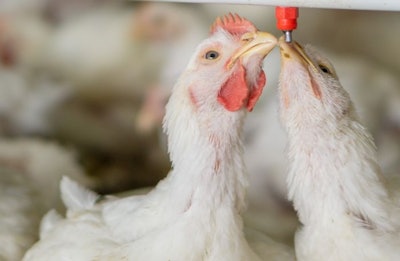
In the past week, the antitrust authority in South Korea imposed heavy fines on 16 of the country’s poultry companies.
According to Yonhap news agency, the penalties amounted to a total of 175.8 billion won (KRW; US$145.1 million).
Including some of the nation’s largest producers, the companies involved had a combined share of 77% of the market, and the collusion continued for 12 years.
In the judgement of antitrust regulator the Fair Trade Commission (FTC), the actions increased the price of chicken in South Korea. The agency stated it has a zero-tolerance policy in cases where price-fixing impacts citizens’ lives.
Top companies fined
Of the 16 poultry companies involved, the FTC has fined 15. The other firm has applied for court receivership.
Market leader Harim Co. has provisionally received the highest penalty — KRW40.6 billion. At KRW25.6 billion and KRW25 billion, hefty fines have also been placed on Orpum Co. and Maniker Co.
Furthermore, five of the firms — including Orpum and HanGang Food Co. — are set to receive a formal complaint from the FTC.
In October of 2021, Yonhap reported that seven chicken meat processors received total fines of KRW25.1 billion. Among them were Harim and Orpum. In these cases, the penalties were served for colluding over poultry prices for the manufacture of Korean ginseng chicken soup samgyetang.
More on the South Korean poultry meat sector
In its forecasts for 2021 and 2022 published in September of last year, the USDA Foreign Agricultural Service (FAS) expected chicken meat production by South Korea to increase moderately. At the time, the sector was in recovery after a wave of outbreaks of highly pathogenic avian influenza (HPAI) linked to the H5N8 virus variant, as well as the impacts of the coronavirus (COVID-19) pandemic.
At the time, FAS was forecasting a 3.2% increase in output in 2022. This equates to production of 922,000 metric tons (mt).
The latest published figures from South Korean authorities were for 2020. In that year, domestic output was reported as 642,360 mt (on the basis of boneless chicken). Imports amounted to 170,290mt, and exports to 55,807 mt, putting the nation’s overall supply at 756,843 mt.
In the south-west of the country, the provinces of North Jeolla and South Jeolla produce around 61.2 million chickens a year, which is one-third of domestic production.
Also this year, South Korea’s poultry sector has been afflicted by HPAI. So far this winter (2021-2022), 46 HPAI outbreaks have been confirmed on commercial farms. Directly impacted have been more than 4.57 million poultry. In this season, infections were caused by the H5N1 HPAI virus serotype, and half of the outbreaks have involved duck farms.
According to a 2017 article in Poultry International, South Korea is expected to be the 15th largest economy in the world by 2030. By that date, national poultry meat production was forecast to be 1.02 million metric tons.
In terms of numbers of birds slaughtered, South Korea’s top poultry companies are Harim Group and Easy Holdings Co Ltd, according to WATTPoultry.com’s Top Poultry Companies database. Annual production is 392 million and 125 million birds, respectively, putting these firms at 10 and 35, respectively in the rankings for poultry production in Asia.

















